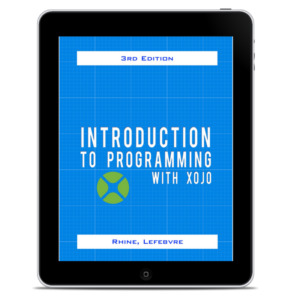
Keynote makes it easier to present your document as you do not have to hit a button to start or restart your slideshow. Week 2 Assignments: Loops, If-Then-Else, Case statement and more In chapter 3 and 4 of Xojo intro to programming we saw learned a lot about various kinds of. You can conveniently select your mode of a slideshow presentation. Step 4: For automatic playing, tap on the self-playing option and select the transition delay and build delay and now click done.Step 3: To enable loop or restart the show, enable their toggles.Step 2: Go to settings and click on the presentation type.Step 1: Access your presentation in Keynote on your iPhone or iPad device and then go to the settings by clicking on the three dots present at the top.The FolderItem class also gives you the methods to do a lot of file operations without effort. Play, loop, or restart a slideshow in Keynote for iPhone or iPad Xojo gives you the class FolderItem fully loaded with a useful bunch of properties that allow you to examine the attributes of any file for example, the creation or modification of dates, the file path (in several formats), if the file is an alias, etc. You can even select more than one option.ģ. Step 3: choose from the following options.Step 2: Select the document tab at the top of the sidebar.Step 1: Go to your presentation in the Keynote and open the settings by clicking on the document button present in the top right.
#Xojo for loop for mac
Play, loop, or restart a slideshow in Keynote for Mac Here's a step-by-step guide to automatically play, loop, or restart the slideshow in a keynote. Loop Editor is the perfect replacement for Apple Loops Utility.
#Xojo for loop software
Keynotes make a presentation very handy, and it becomes very easy to manage it in a waiting room, trade show, or conference room. Latest updates on everything Xojo Editor Software related. With a keynote, this becomes easier, and you can set your slideshow in a loop or restart it without lifting a finger. The most basic thing about slideshows that it should be easy to play, loop, and restart.
#Xojo for loop update
If we update the engine, you can check the version number and compare. Var readFile As FolderItem FolderItem. The EOF property is used to terminate the Do loop. The user chooses the source file using the Open-file dialog box and saves the new file using the Save as dialog box. Use unicode escapes in strings if needed to mask special characters.Ĭurrently the value is 20500 for version 2.5. This example reads each pair of bytes from a file and writes them in reverse order to a new file.While the engine handles UTF-8 fine, you can escape some characters with \u followed with a hex 4 digit number, e.g. Use built-in functions to encode text as hex or base64 via Duktape.enc.Use c and TextDecoder class to decode base64/hex encoded text to UTF-8 string.Var result = new TextDecoder().decode(c('base64', 'Zm9v')) Result is now a variable with text "foo". Access call stack with Duktape.act function.Query Duktape.act(i) with various values of i. Pass -1 for the act() call, -2 for the current function and -3 for the caller of current function.


The returned object contains properties for lineNumber and function. You can add a console object and include a log function, which sends arguments to a Print function:Ĭonsole = When you query function.name, you get the name of the function.

Provide environment some JavaScript may need.If some JavaScript expects a global window object to store something, you can simply create a dummy one:
#Xojo for loop code
This may not provide functionality, but allows at least code to check for this to work.


 0 kommentar(er)
0 kommentar(er)
